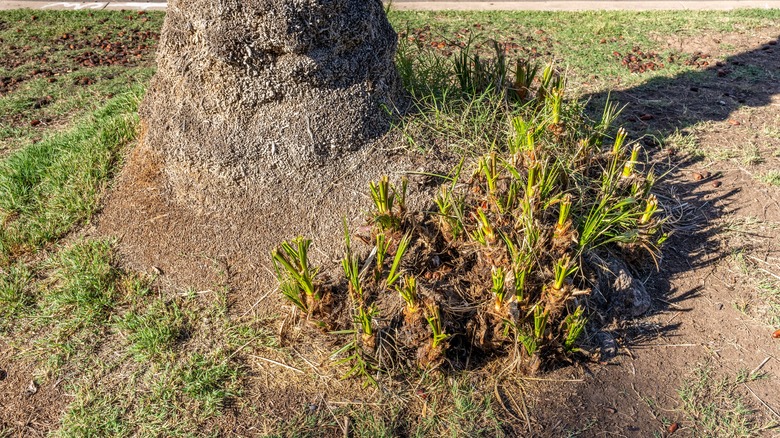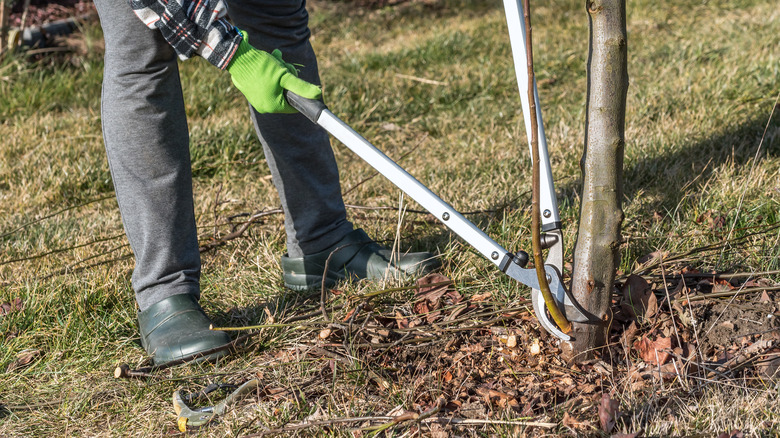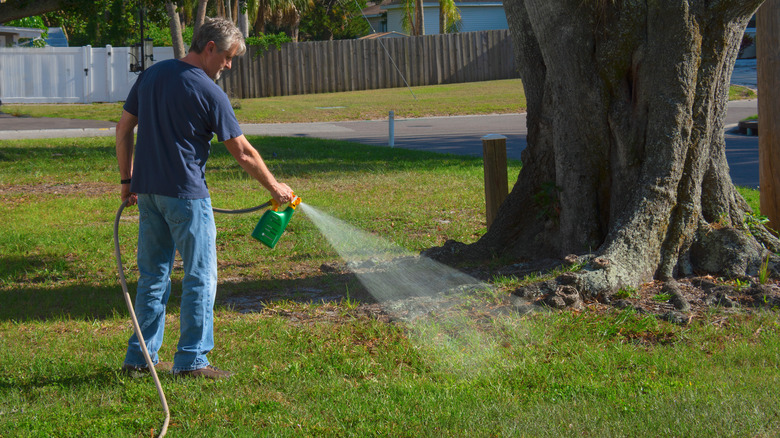What It Means If Young Stems Are Sprouting From The Base Of Your Tree
If you have a garden, then there are certain things you have to learn to pay attention to for the good of your plants. Some things may seem normal, but upon closer inspection, you'd find that they pose a threat to the balance of the garden. If you have a tree in the yard and find that it has cute little plants sprouting up anywhere on its trunk, it's time to take action. Those plants are called tree suckers and they are foes, not friends. True to their name, they siphon nutrients and resources from your tree. These growing plants may look healthy but that's because they are using nutrients that should be going to the main tree. Fortunately, you can manage the growth of the suckers by pruning them off your tree .
Tree suckers are an eyesore to some and an adorable work of nature to others, but one thing we can all agree on is that once spotted, they need to go. Suckers usually spring up due to the root system of your tree being overexcited, especially if you got the tree from a nursery that grafted the root and scion together. Sometimes, their rigor doesn't match up and the roots end up overtaking the top part of the tree, resulting in a plethora of suckers grouped at the base. Pruning is your best option to remove these little parasites before they weaken the tree past the point of no return.
Always prune the tree suckers while they're young
The thing about pruning the suckers off of your tree is that it's only a temporary solution. Unfortunately, a tree that is being plagued with suckers won't ever stop having them. It's something you just have to learn to deal with. You have to know when is the best time to get rid of them and how to do it.
Pruning tree suckers is always ideal when they are young shoots and not when they have fully established themselves on the tree. The suckers are attached to the tree after all, so removing them when mature can increase the risk of harming the tree. You can prune them anytime during the blooming season from early spring to early summer.
Pruning the suckers is as simple as pruning dead branches, but you have to pay attention to the technique so you don't damage the tree. Some suckers are located higher up on the tree trunk while the others are lower at the base or even in the soil. First, make sure you have on your gardening gloves and your shears are nice and sharp. You can also use hand pruners for smaller suckers. If the sucker is high up on the trunk, pull on the sucker to see what you're working with and clip it as close to the tree as you can get. For lower suckers, brush back the soil and cut it at its point of origin.
Resist the urge to use any type of herbicide on tree suckers
Tree suckers are part of the root system of the tree and will still grow back after they're pruned, so managing them will require effort. For those who wanted low-maintenance trees in their garden, this may seem like a bummer. As frustrating and never-ending as it may seem, don't ever be tempted to use herbicides to finish them off. Using herbicides on tree suckers will affect the host plant. You will condemn the tree to damage, or even worse, death. Pruning is your only bet in this situation, so just think of it as part of the regular care routine necessary for your tree's health.
Once your tree has suckers, it's for life. The only prevention method you can employ is to not plant trees that are prone to developing the suckers. Some tree species to avoid are poplar, Canada red cherry, maple, black locust, hawthorn, and dogwood. But if your tree does have them, don't fret. If pruned correctly, your tree will be healthy and live to produce many harvests.


